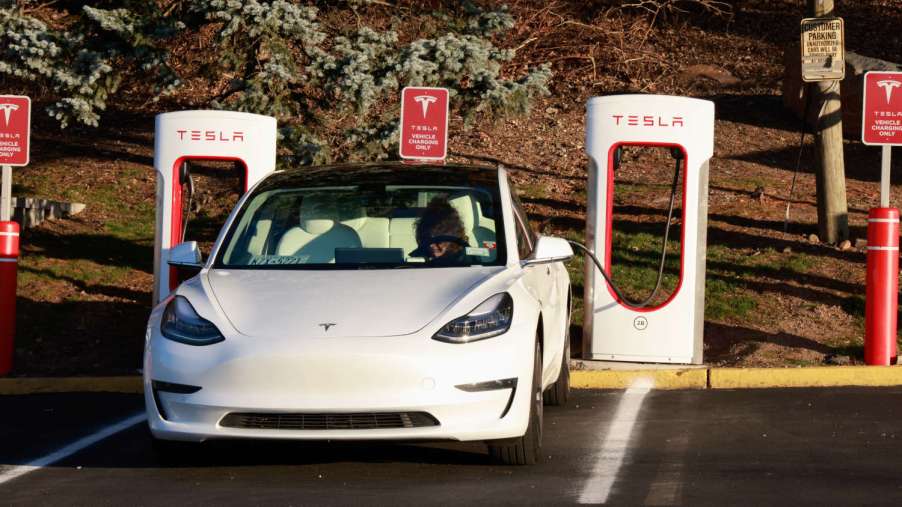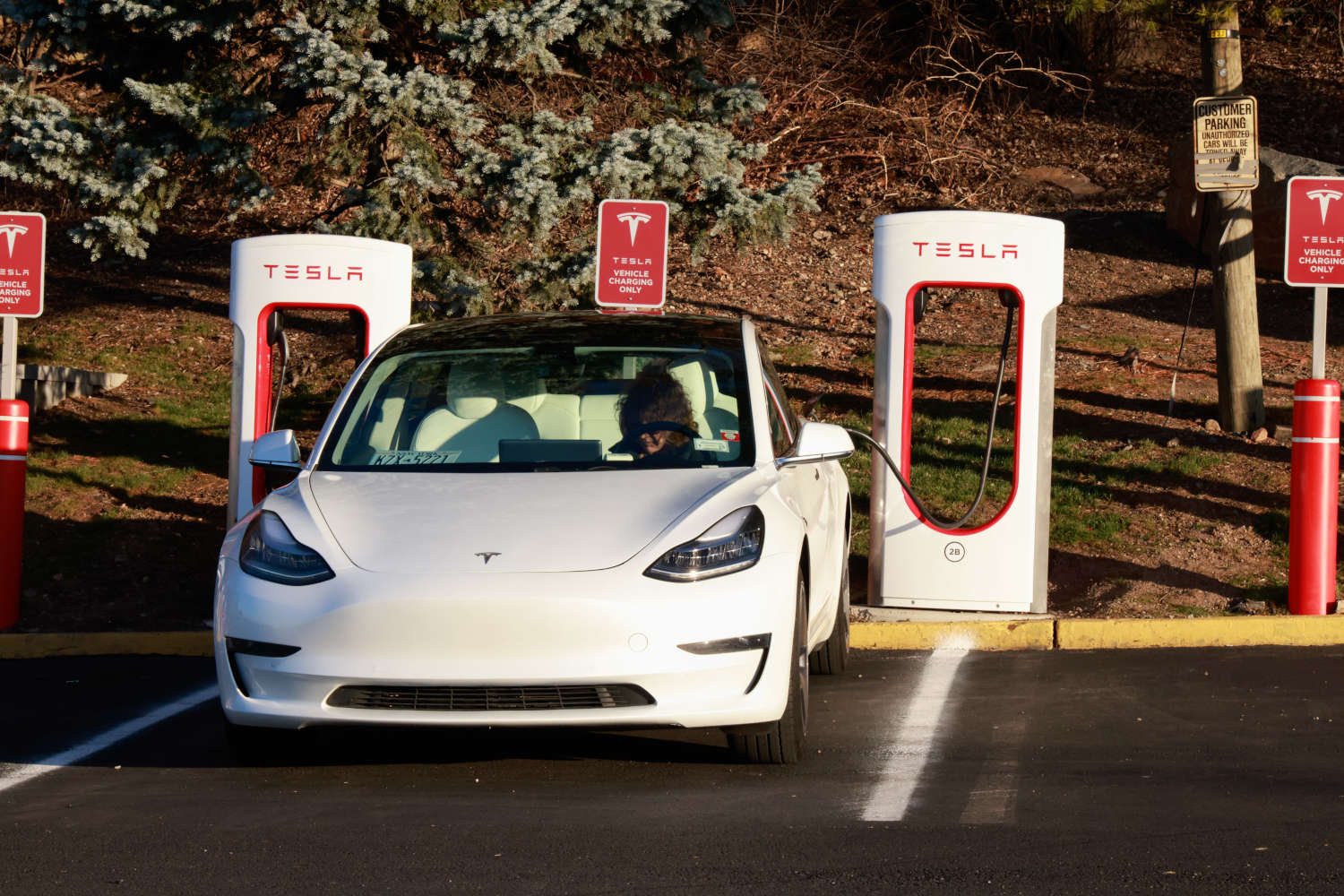
How Does the Tesla Supercharger Network Work with Non-Tesla EVs?
Tesla Superchargers recently opened up to non-Tesla EVs, but not all charging stations are ready yet. While Tesla plans to continue building and expanding its charging network, how has the experience been for non-Tesla electric cars so far? Check out the experiences with the Lucid Air, Kia EV6, and Mercedes-Benz EQE utilizing the Tesla Supercharger Network.
The Tesla Supercharger Network is open to non-Tesla EVs
Consumer Reports did some testing after the Tesla Supercharger Network opened to non-Tesla vehicles. Tesla has more than 1,500 Supercharger locations around the country. This gave Tesla an edge over other automakers slowly building charging stations nationwide.
The White House announced that Tesla would open its charging network to other brands to qualify for some of the $7.5 billion committed for EV charging network expansion. Tesla plans to have 7,500 chargers through its Supercharger and Destination Charger network by the end of next year. And 3,500 will be new and existing fast 250-kilowatt (kW) Superchargers on highways and other convenient travel areas. The rest will be Level 2 chargers at restaurants, hotels, and shopping centers.
For non-Tesla EVs to charge up, the charger must have the “Magic Dock.” This allows the Combined Charging System (CCS) charging vehicles to utilize the Tesla plugs. The Nissan Leaf is one of the only EVs that uses a different plug and won’t be able to charge up.
Non-Tesla vehicles need an adaptor for the Tesla Supercharger Network
Alex Knizek is an automotive engineer at Consumer Reports who tested some Magic Dock Superchargers. Knizek used a Lucid Air, Kia EV6, and eventually, a Mercedes-Benz EQE. To charge at a Tesla Supercharger, drivers must download the newest version of the Tesla app and add a payment method. The Tesla App can help locate a Magic Dock CCS adaptor since not all chargers will have this equipment.
That was one of the biggest drawbacks of the current Tesla Supercharger Network. From Consumer Reports’ testing center in Connecticut, one Magic Dock charger was 80 miles away while the other was 170 miles. Once located, non-Tesla vehicles were subject to expensive charging fees. Prices ranged from $0.48/kWh to $0.55/kWh, comparable to Electrify America’s non-subscription price. With a $12.99 monthly membership, drivers only pay $0.39/kWh.
There are some kinks to be worked out. Tesla’s charging cord is short, and there is no standard place for a charging port, which could mean a lot of backing in/out to plug in. This might be remedied on new charging stations.
How did the Lucid Air, Kia EV6, and Mercedes-Benz EQE do?

While charging the Lucid Air at Stewart’s Gas Station in Ballston Spa, New York, the charging fee was $0.49/kWh. Knizek said the short charging cord and the placement of the Air’s charging port made it difficult at first. He had to get back in and ask someone for help inching closer to the charger. The cord was still too tight, which meant Knizek had to park parallel to the charger, blocking other spots. Eventually, the Lucid Air started charging, but not as fast as a Tesla might have charged. Charging maxed out at 49kW, even with battery preconditioning.
The Mercedes-Benz EQE and Kia EV6 attempted to charge at the Tesla Supercharger Network in Brewster, New York. Pricing was $0.49/kWh here too. Both the EV6 and EQE have charging ports on the rear passenger side, which proved to be an awkward spot. After parking in the spot over one stall and utilizing the original charger, the EV6 would not charge. After moving to another spot, charging resumed. The Mercedes-Benz had no issues charging, albeit at a max charging rate of 76kW. Tesla’s Supercharger offered a max charging speed of 40kW with the Kia.
While it might take some time, the Tesla Network will be a big help to electric car drivers in the future. Some missteps are to be expected along the way, but all of the non-Tesla cars were eventually able to charge up. The biggest issue will be finding chargers on the Tesla Supercharger Network with the Magic Dock adaptor for now.



